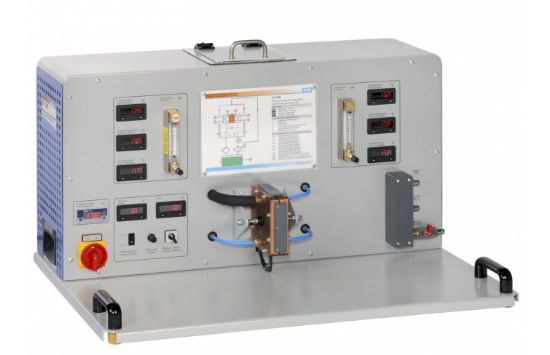The GUNT Cooling Using The Peltier Effect Experimental Unit demonstrates cooling based on the thermoelectric Peltier effect.
Product Features
- Peltier elements use the thermoelectric effect of semiconductors, producing a temperature difference when electrical current flows
- One side of the element becomes hot, the other side cold, enabling cooling and heating
- Wear and maintenance-free, noiseless operation, and position independent
- Refrigeration capacity adjustable via supply voltage without requiring refrigerants
- Water-cooled system with measurements of flow rate and inlet/outlet temperatures to determine heat flow
- Electrical power consumption measured through current and voltage
- Closed water circuit allows operation without water mains connection for short periods
Benefits
- Demonstrates thermoelectric cooling principles suitable for thermography, beverage chilling, and medical applications
- Compact and easy to operate experimental setup
- Ideal for educational and research applications focusing on thermoelectric devices
Why Choose the GUNT Cooling Using The Peltier Effect?
This experimental unit provides a clear, hands-on understanding of Peltier cooling with accurate measurement capabilities and practical design.

